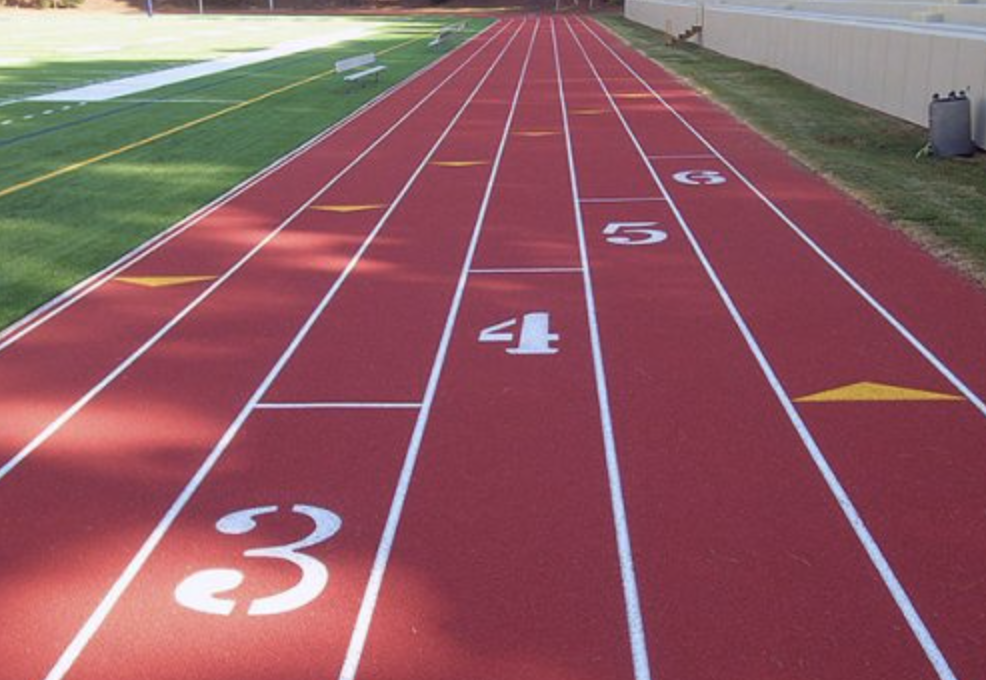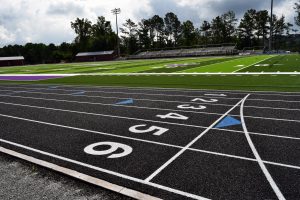Ensuring your Track Renovation or Construction is Successful: Hire a Certified Track Builder

How often have you heard an Athletic Director, School Facilities Administrator, or a Coach lament their track. “Our track holds water.” “It cost us too much money.” “We couldn’t get the installer to come back for maintenance issues.” “The surface is wearing prematurely.” “The project took months longer to build and we had to move track meets.” There are a whole host of concerns that you’ll hear if you listen long enough. The chances are none of those projects were built by an ASBA recognized Certified Field Builder or Certified Track Builder.
The American Sports Builders Association (ASBA) is a national organization of 400 member companies recognized as a centralized source of technical information about natural and synthetic fields, running tracks and tennis courts. ASBA works to raise professional standards and to ensure owners receive the highest quality services through a Professional Certification Program, Education Initiatives, Construction Guidelines Publications, and Awards.
Why is a Certified Track Builder important when looking at renovating or constructing your running track facility?
By having passed a rigorous comprehensive exam on running track construction and maintenance, Certified Track Builders (CTB) have demonstrated the highest level of expertise.
Certified Track Builders must be well-versed in project planning, project administration, site work, sub-grade, base work, and maintenance. Certified builders must have at least three years of experience and at least twenty projects built, before even taking a comprehensive exam. They must perform enough athletics construction projects and be invested in their field to justify paying the $600 fee to take the test.
By having specified a Certified Track Builder, you have prevented the average contractor or a builder, who happens to have a little extra bandwidth, but has very little experience, from cutting their teeth on your project. Unfortunately, many of the folks who offer a price on athletic construction work really do think they are great at what they do, but without a process by which to measure greatness, the owner is the one who suffers. The other challenge with not holding a high enough specification such as requiring a Certified Track Builder, is these less qualified proposers will offer a lower price commensurate with the quality of their work, positioning elected officials to either take the lower bid and suffer the consequences, or to justify why they selected a contractor that is sometimes substantially higher in price.
A Certified Track Builder can help develop a realistic budget, layout, and then build your running track facility to meet or exceed national best practices. They are best positioned to solve problems as they arise during construction, and adhere to Certified Builder Standards of Conduct. Perhaps as important as having a CTB employed by a construction company, is to have that Certified Track Builder onsite during construction. ASBA actually forbids a CTB from farming their certification out to help companies meet the standard. A Certified Track Builder may not have a relationship with more than one company at any given time and may not facilitate any party in misrepresenting itself as having a track builder in order to circumvent a bid contract requirement. That means if an owner specifies the awarded contractor to have a CTB on staff, they actually have to be on staff because that company can not go out and subcontract to an individual who holds this certification to meet the requirement.
Athletic projects, specifically running tracks, can be very complicated. The geometry involved in various running track designs would overwhelm a high school math teacher. It is important to remember that a 399.9999 meter track is not a regulation 400 meter track. Surface smoothness is measured at .125” over ten feet. Tolerances and guidelines are incredibly tight because athlete’s times are measured in .100 of a second. Standards are set by three different governing bodies with respect to running track and field, NCAA, NFHS, and IAAF.
 As an example, Gilmer High School was challenged by wanting to expand their existing 6-lane track to 8-lanes to host regulation track meets, but also wanted to widen their soccer field.
As an example, Gilmer High School was challenged by wanting to expand their existing 6-lane track to 8-lanes to host regulation track meets, but also wanted to widen their soccer field.
Sports Turf Company’s Certified Track Builders evaluated the site and found that their bleachers did not permit the 8-lane track, but widening the field to allow for a regulation soccer field would not have to eliminate a lane of the track.
The orientation was redesigned shifting the field towards space on the home side to best suit Gilmer High School’s needs and allow for a regulation soccer field. The entire field was enlarged, the distance between the measure lines for the track were changed, and the straightaways were shortened. The curves were made longer and wider to accommodate the new wider field and maintain 6 lanes on the running track.











